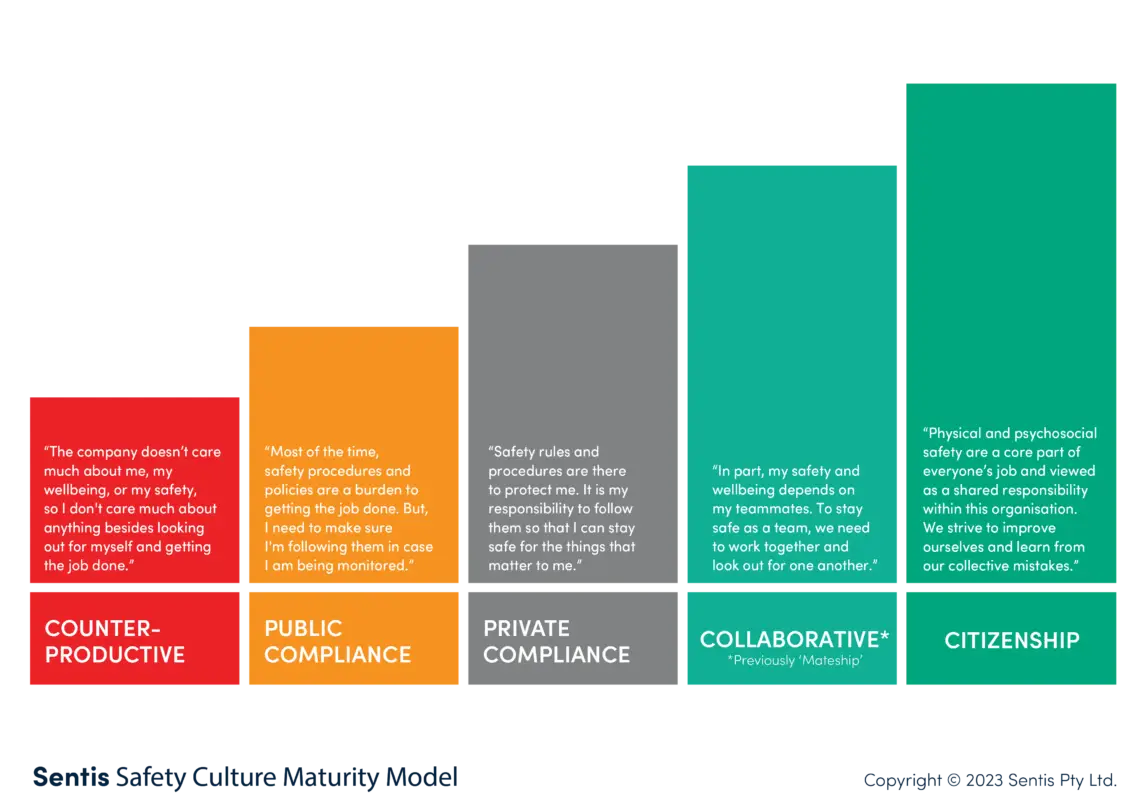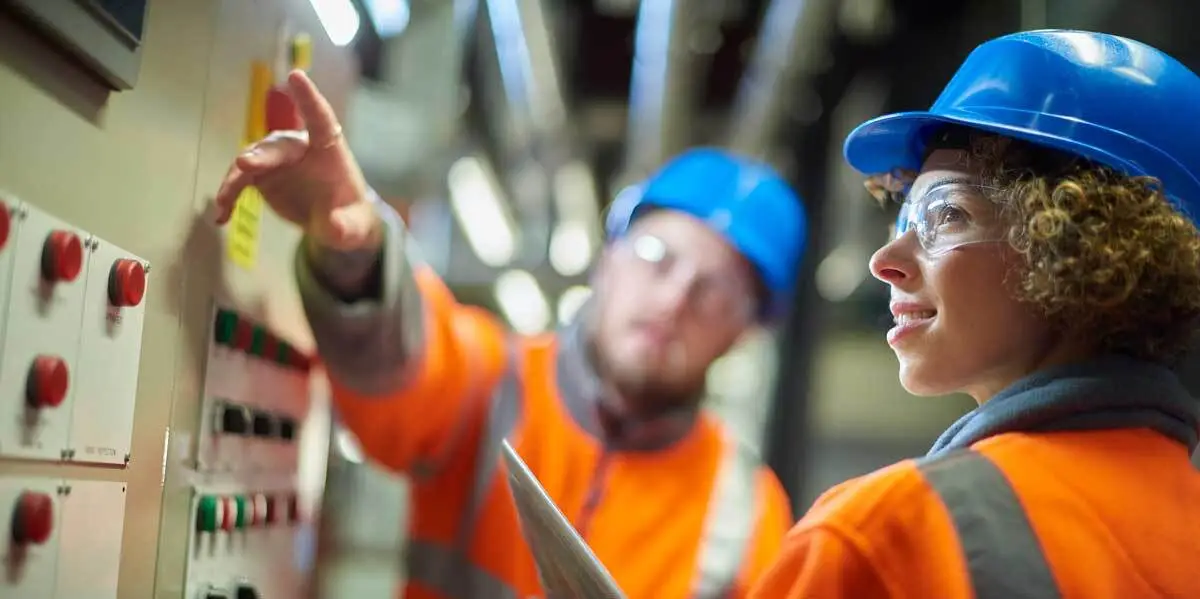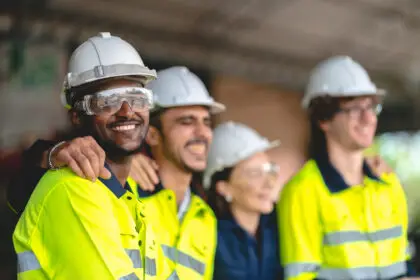Organisations need to invest in all four dimensions of safety culture to effectively manage risk and create a strong and positive safety culture. But what does good look like? And how do you get there?
Safety citizenship is the gold standard of safety culture. It represents a significant opportunity for organisations to capitalise on their greatest asset—their people—to further reduce safety-related incidents and increase engagement. Before we jump into what safety citizenship looks like, it’s important to provide context and explore safety culture maturity.
Understanding Safety Culture Maturity
The Sentis Safety Culture Maturity Model describes the journey organisations take as they progress towards a positive safety culture. On this journey, organisations display different types or “profiles” of safety culture. Each of these profiles differ in their level of maturity or effectiveness. More mature safety cultures are more conducive to good safety performance.
At the lowest level, Counterproductive, individuals actively work against the company and safety rules and procedures. At the highest level, Citizenship, individuals seek ways to improve and invest in safety for the benefit of themselves, their team and the organisation.

Safety Citizenship: The Gold Standard of Safety Culture
Safety citizenship is the gold standard of safety culture. It describes a culture where individuals make a conscious choice to go above and beyond the duties of their role to improve safety for every person in the organisation.
Safety citizenship behaviours include:
- going above and beyond basic compliance
- identifying opportunities to improve safety
- willingly discussing safety concerns with leaders and teammates
- voluntary membership of safety committees
- actively engaging with safety initiatives
- keeping informed about the latest safety changes on site
- monitoring the safety performance of team members to ensure everyone is working safely.
In cultures operating at a Citizenship level of maturity, safety is always maintained at the highest level possible, regardless of internal or external challenges. Continuous improvement is a core part of the culture and workers speak up for safety without fear of retribution.

Additionally, in cultures of safety citizenship:
- teams have a budget and discretion to buy what they need to be safe and productive (e.g. tools and equipment) and take pride in maintaining a clean and well-organised work area
- workers are trusted to do job planning and have the flexibility to adjust and perform work tasks as the situation requires for a safe outcome
- high safety performers act as coaches and help drive safety initiatives across the business, and supervisors are seen as “safety champions” who are passionately committed to workplace safety
- time is spent selecting the right contractors who align with the organisation’s safety vision and effort is made to build strong, long-term partnerships
- emergency readiness is a core part of the culture, with lessons learned and improvement targets communicated
- safety training is a critical area of employee development that the company takes seriously and focuses on more than just achieving compliance
- employee wellbeing is supported with significant investment and integrated into the way work is done and how the business is run
- safety is a natural part of daily discussions and is not limited to one’s immediate team—workers go out of their way to make sure other teams know about safety issues or learnings
- open and transparent reporting takes place, with lessons learned shared across the company
- workers at all levels are actively involved in major safety decisions through representation on committees or other formal consultation forums.
So, it makes sense that safety citizenship is the ultimate goal. But how do you get there?
Towards Citizenship: Unlocking a Positive Safety Culture
It’s hard to argue against the idea that a culture of Citizenship should be the ultimate goal. Yet, the data explored in Sentis’ latest study shows that as a society we’re a long way off achieving this outcome. With 86% of organisational sites operating in a negative culture of blame and avoidance (i.e. Counterproductive or Public Compliance), it’s no wonder that Safe Work Australia reports that the cost of work-related injuries and diseases is continuing to increase.
The reality is that achieving Citizenship (or any cultural change for that matter) doesn’t happen overnight. It requires dedicated and continuous effort and the first step is to unlock a culture of Private Compliance—the foundation for a positive safety culture. At this level individuals choose to work safely, even when no one is watching, making it a key steppingstone for a culture of Collaborative and then, ultimately, Citizenship.
To learn more, download your complimentary copy of Driving a Positive Safety Culture—featuring more than 60 individual recommendations for leaders, as well as a practical step-by-step roadmap for setting up your cultural transformation project for success.




